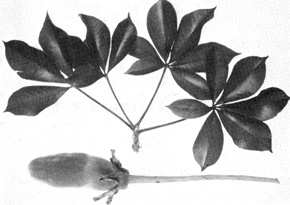
Figure 16. Baobab, a fruit with dry but acidic pulp. Durio zibethinus L. Common names: durian (English, Malay). Origin: Southeast Asia. Distribution: Tropical Asia; some introduction elsewhere in Tropics. Cultural requirements: Hot, humid tropical lowlands with deep, fertile soil. Very susceptible to cold injury. Not tolerant of poor soils. Description: Tree to 40 m. Propagation by seed, grafting. Fruit production in 7-8 years from seed, 3-4 years from grafts. Some flower all year. Fruit 15-30 cm long, solitary; external color greenish yellow, internal white or yellowish. Utilization: Aril eaten fresh, preserved, dried. Seeds boiled, roasted. Flavor sweet, with strong aromatic odor; great appeal. Good source of calories, vitamins B and C. Excellent potential in humid Tropics. Variety selection and cultural research in Thailand. References: Burkill 1935, Molesworth Allen 1967. Matisia cordata H.B.K. (= Quararibea cordata (Humb. et Bonpl.) Garc. et Hern.) Common names: South American sapote (English); sapota, zapote chupachupa (Spanish); sapote du Pérou (French); sapota do Peru (Portuguese). Origin: South America. Distribution: South America. Cultural requirements: Hot, humid tropical lowlands. Very susceptible to frost injury. Description: Tree to 12 m. Propagation by seed. Flowers January-February (Florida). Fruit matures in 270-300 days. Fruit 12-14 cm in diameter; external color brown, internal orange. |
Utilization: Pulp
eaten fresh, in desserts. Flavor sweet, pleasant; moderate appeal. Potential
as food crop limited except in native area. References: Hodge 1960, Popenoe 1924, Whitman 1976. BromeliaceaeAnanas comosus Merr. Common names: pineapple (English); piña (Spanish); ananas (French); ananas, abacaxi (Portuguese). Origin: South America. Distribution: Pantropic. Cultural requirements: Warm to hot tropical climate with medium rainfall. Light, well drained, acid soil. Description: Herb to 1 m. Vegetative propagation by crowns, slips, suckers. Fruit production in 15-24 months Flowers can be induced at any time of year. Plants self sterile, but pollination not neces-sary because fruit develops parthenocarpically. Fruit matures in about 180 days. Fruit 30-60 cm long, solitary; external color yellow to orange, internal white to yellow. Utilization: Pulp eaten fresh, canned, frozen, dried; made into juice. Flavor sweet, aromatic; universal appeal. One of the most important fruit crops of the world, with commercial production in most countries of the Tropics. Reference: Ochse et al. 1961. BurseraceaeCanarium album Reanch. Common names: canarium, Chinese olive (English); kanran, ch'ing-huo (Chinese). Origin: Asia. Distribution: Asia. Cultural requirements: Subtropical or cool tropical climate Description: Tree. Propagation by seed. Utilization: Pulp eaten fresh. Whole fruit preserved. Seed edible but small and not generally used. Pulp source of oil. Canarium indicum L. Common names: canary nut, Java almond (English). Origin: Southeast Asia. Distribution: Introduced widely in Tropics. Cultural requirements: Tropical rain forest. Description: Tree. Propagation by seed. Utilization: Seed used in various food preparations and as source of oil. Flavor rich; wide appeal. Good potential for expansion. |